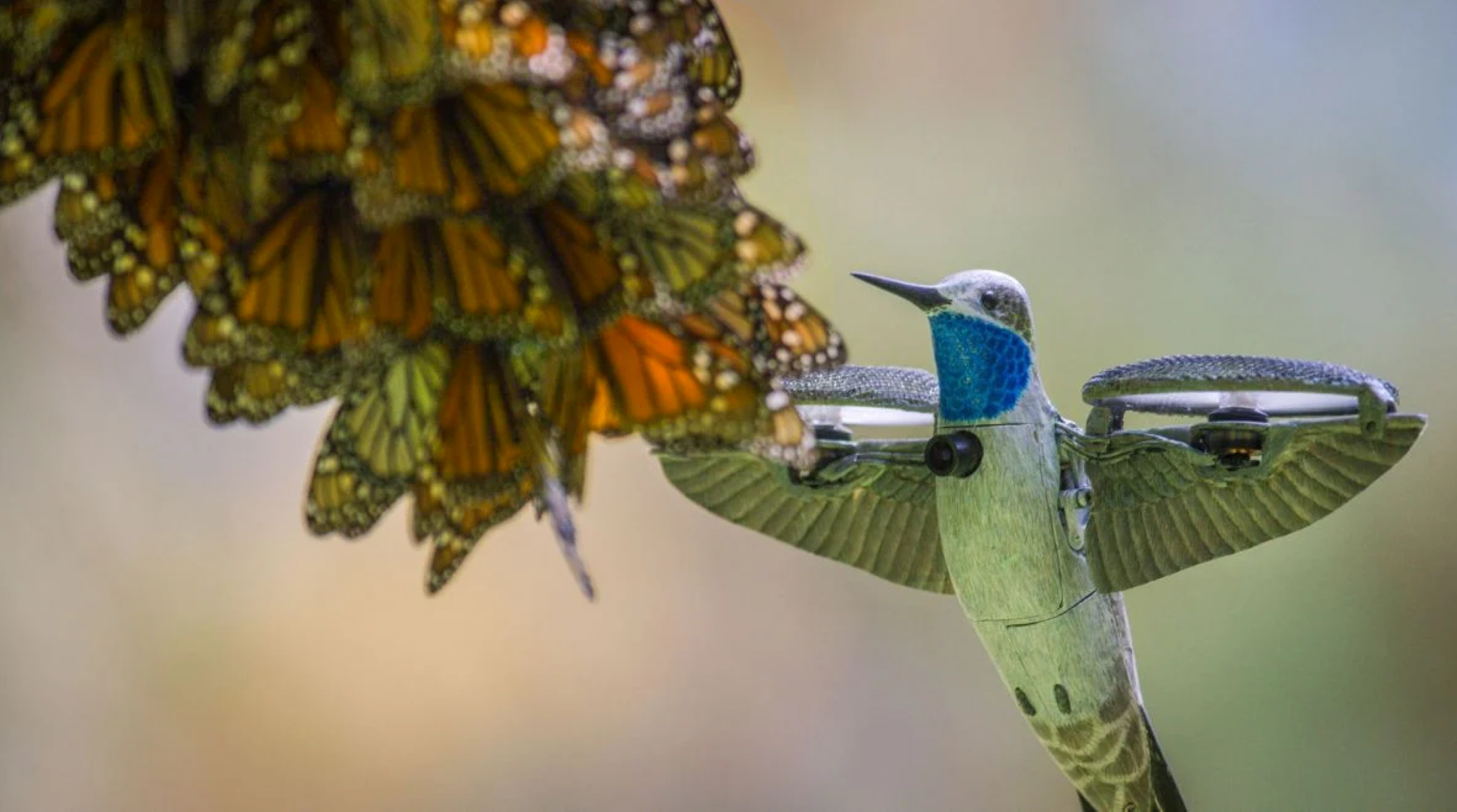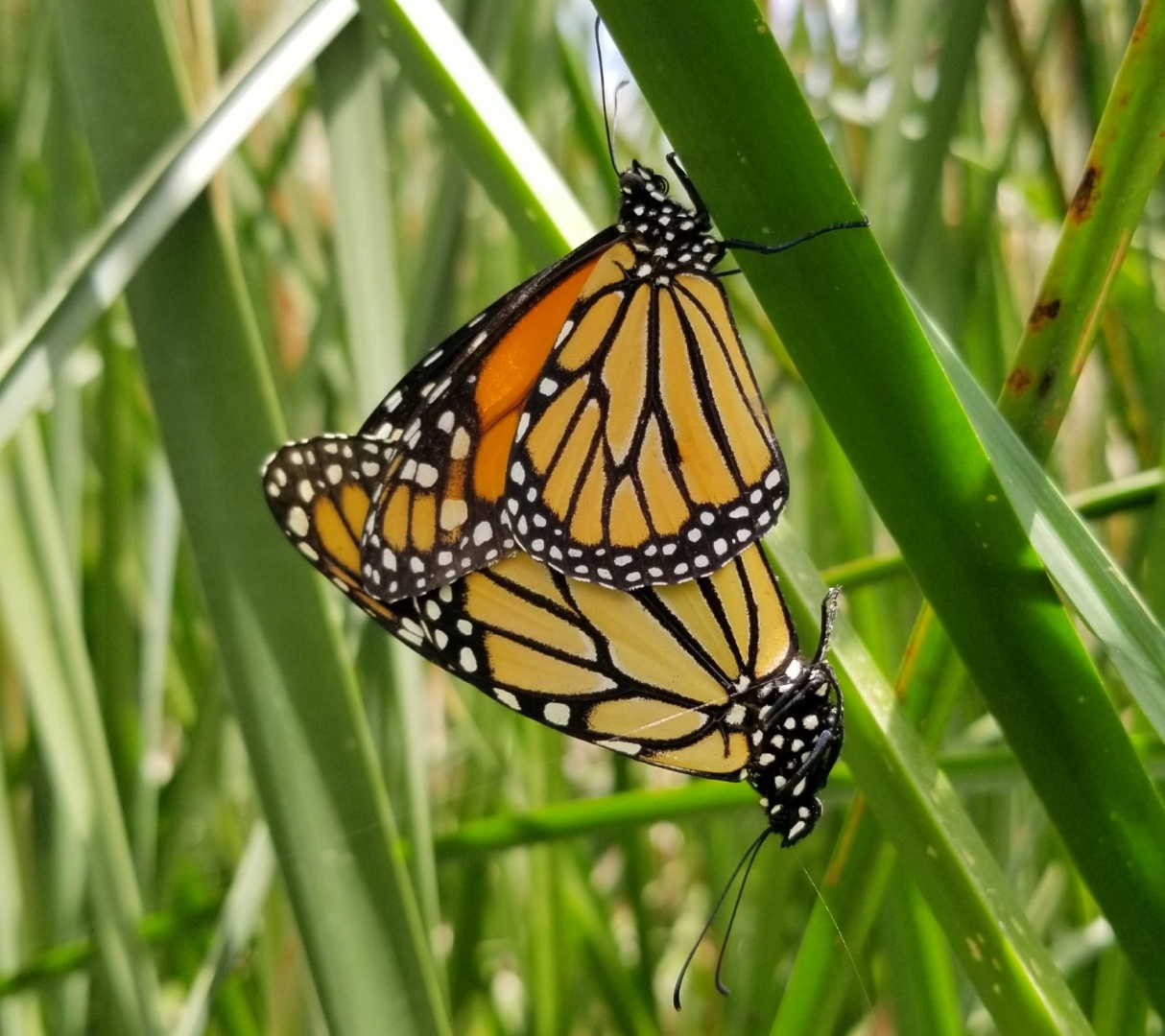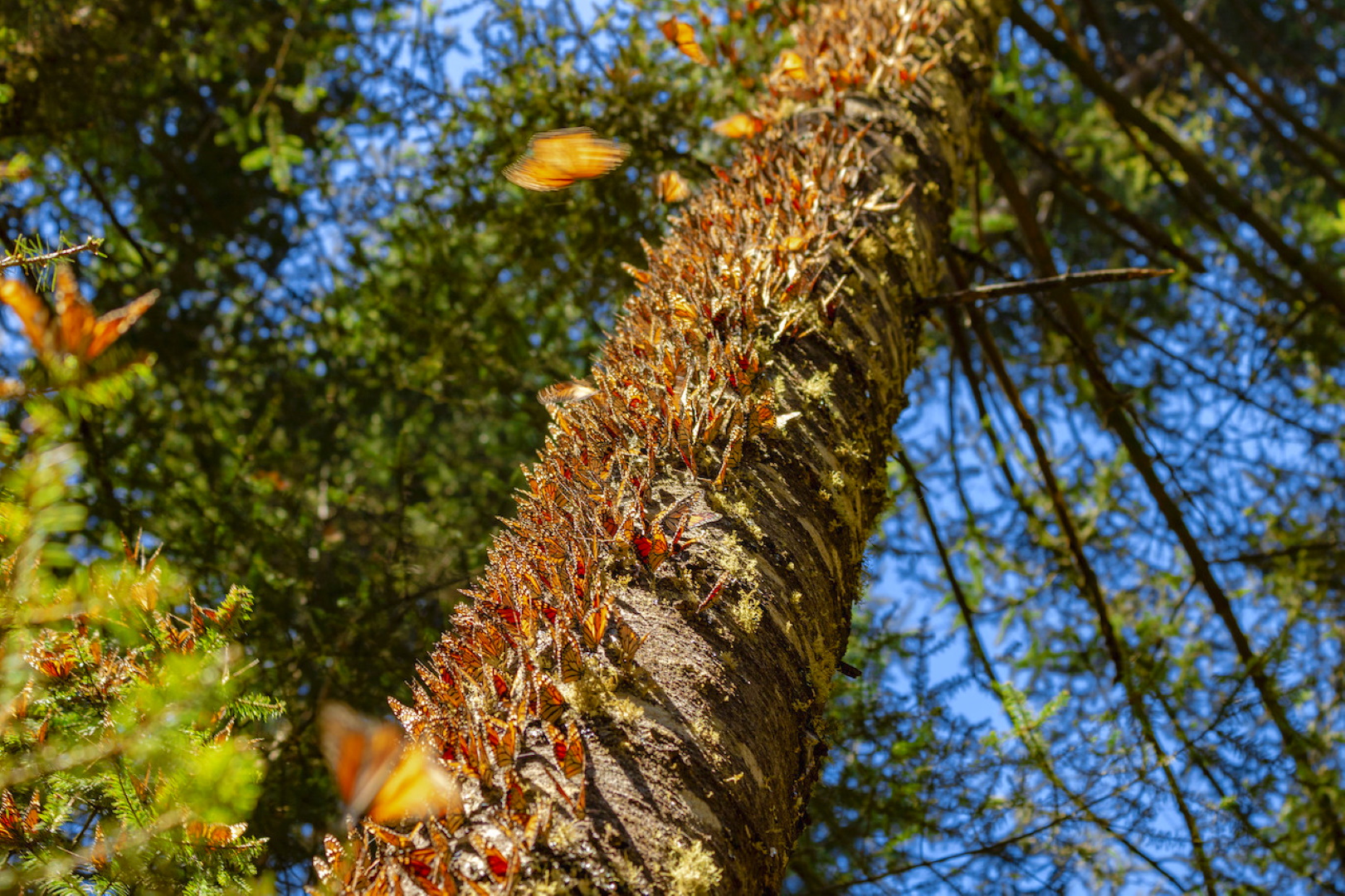Watch ‘Hummingbird’ Spy Cam Capture Sea of Monarch Butterflies Take Flight
Watch ‘Hummingbird’ Spy Cam Capture Sea of Monarch Butterflies Take Flight
by Michelle Estevez
May 2, 2020
In the winter, billions of monarch butterflies find warmth in the cool Mexican mountains. Huddled together with closed wings for maximum heat, a hovering ‘hummingbird’ captures the awakening of these magical creatures in a dazzling dance. The video is part of PBS Nature’s Spy in the Wild Series.
Each episode tells the story of wide-range emotions experienced by all animals such as a capacity to love, grieve, deceive, and invent. The use of animatronic cameras allows for a non-invasive loo into the lives of creatures we wouldn’t necessarily see. The series makes use of other camera designs to explore groups of orangutans, tortoises, sloths, cobras, hippos, and more.
“We wanted to make a small spy creature that could explore and maneuver through a forest and film one of the most fragile creatures in the entire series, monarch butterflies,”
Phil Dalton of John Downer Productions said in an interview.
 Photo via John Downer Productions
Photo via John Downer Productions
“We knew hummingbirds share their habitat and so this was our inspiration. The goal was to make a hummingbird to scale, about 20 centimeters [8 inches] from head-to-tail, hover in all directions, be as quiet as possible and have no exposed moving parts, as well as carry a 4K camera.

“After many prototypes, we managed to make spy hummingbird, weighing just 70 grams,” or about 2.5 ounces, Dalton said. “It could hover just like the real thing. It was also totally harmless to the butterflies with shields to protect the butterflies from coming into contact with moving parts. The butterflies could even land safely on [the] spy hummingbird’s wings. The results were sensational, filming the migrating swarms through the forest, wingtip to wingtip.”

Traveling from North America to Mexico, monarch butterflies (Danaus plexippus) travel up to 2,800 miles. While some believe this area is home to microclimatic tree conditions, the multigenerational travel to this specific area is still unknown.